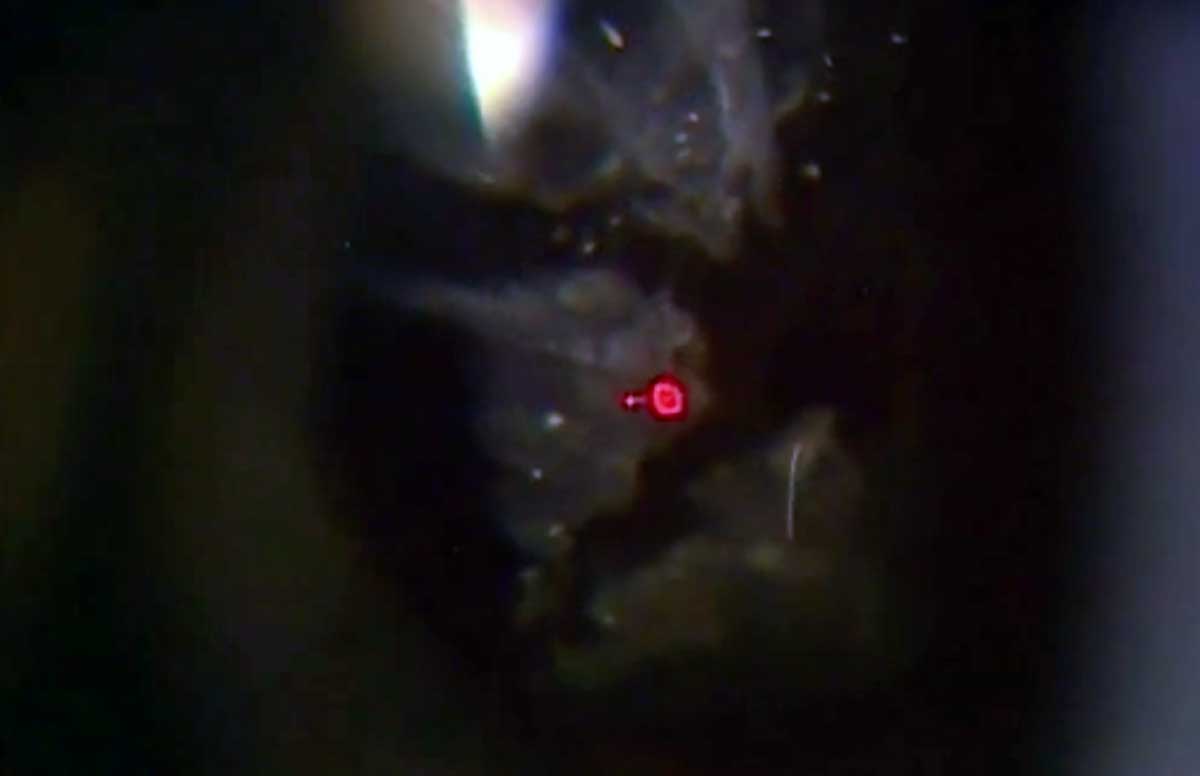 |
|
Frequently occurring side effects after Nd:YAG posterior capsulotomy include OHT and macular edema. Photo: Nathan Lighthizer, OD. Click image to enlarge. |
YAG laser capsulotomy is commonly performed in clinical practice but epidemiology data is somewhat lacking regarding the procedure’s complications. To help, researchers recently estimated the incidence and assessed the risk factors associated with three adverse events of interest after YAG capsulotomy: ocular hypertension (OHT), macular edema and retinal detachment.
More than 6,000 patients who underwent capsulotomy between 2014 and 2017, with no ocular disease history in the year before, were included and followed for 12 months. Based on this national claims database, OHT and macular edema were the most frequent adverse events within the first three months post-procedure, highlighting the need for close follow-up during this period or delayed capsulotomy if possible.
“The one-year occurrence of OHT/glaucoma reached almost 10%,” the study authors noted in their paper for the Ophthalmology journal. As patients with history of OHT/glaucoma prior to capsulotomy were excluded, and since the majority of adverse events occurred within the first three months post-procedure, this proportion can be mainly attributed to the procedure itself, they explained.
Macular edema mainly occurred in the first three months after the procedure. “Similar to OHT/glaucoma occurrence, several patients might have received anti-inflammatory eye drops in a preventive way more than 15 days,” the authors wrote. “These potential biases were considered in the macular edema detection. Indeed, we included anti-inflammatory eye drops only if associated with imaging (angiography or OCT).”
Despite being among the most severe ocular adverse events, retinal detachment was rare, with only 0.5% of patients affected at 18 months after capsulotomy. This is similar to a previous study that highlighted the unlikelihood that capsulotomy could increase retinal detachment incidence. “A majority of patients tended to experience an adverse event within the first three months after Nd:YAG posterior capsulotomy, with more than half of the OHT/glaucoma and more than 75% of the macular edema being encountered during this period,” the authors explained.
Diabetes appeared as a significant factor associated with adverse events of interest, which led the authors to believe that some of the diabetic patients may present a subclinical maculopathy or a preexisting fragility of the capillary vessels, which could be triggered by posterior capsulotomy.
Another main factor resulting in an adverse event was the short time between cataract surgery and subsequent capsulotomy. “Whether when considering the rates of the three adverse events of interest overall or individually, the time between cataract surgery and Nd:YAG posterior capsulotomy appeared as one of the most important drivers for adverse event occurrence, with a short period (less than two years) between these procedures appearing as a risk factor,” the authors pointed out. As post-cataract adverse events are somewhat similar to those following posterior capsulotomy ones, notably macular edema and OHT/glaucoma, the proximity of cataract and capsulotomy “could potentiate their iatrogenic effect, increasing the risk of adverse events,” the researchers noted. “These findings highlight the importance of correcting all the known post-capsular opacification factors that can be improved.”
Dot C, Schweitzer C, Labbe A, et al. Incidence of retinal detachment, macular edema and ocular hypertension after Nd:YAG capsulotomy: a population-based nationwide study – the FreYAG2 study. Ophthalmol. December 20, 2022. [Epub ahead of print]. |

